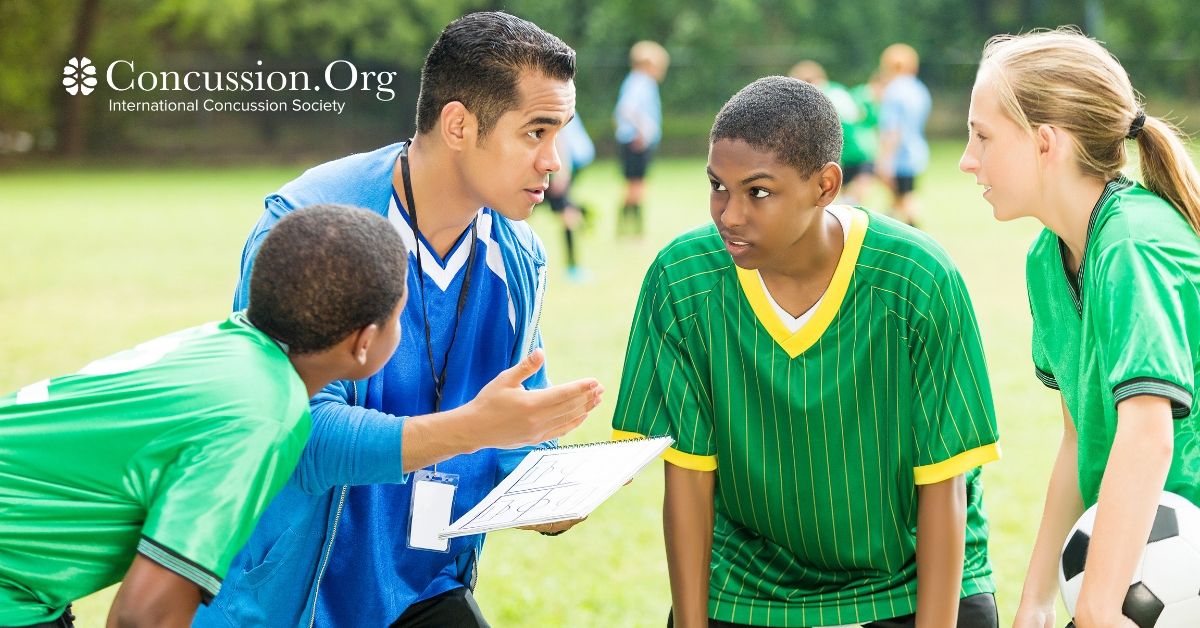Why coaches and team safety officers are the front lines in concussion safety
Coaches of youth sports have an incredible responsibility to keep their players safe. This is especially true when it comes to concussions. A form of traumatic brain injury, concussion can have significant, long-term consequences for the athlete if it is overlooked.
To help protect youth and student-athletes from the complications and risks associated with undetected concussion, the International Concussion Society advises that teams utilize the Mayo Clinic Concussion Check. Understanding this protocol—as well as how to implement it—can help to ensure that young players are able be removed from play when a suspected concussion occurs.
The risks and dangers of concussions
Contrary to what many people believe, concussions result in loss of consciousness less than 10% of the time. The signs and symptoms of concussion can be physical, emotional and/or mental. It is important to take all of these factors into account when attempting to determine if a concussion has occurred in youth athletes.
The prognosis for concussions that are promptly identified on the sidelines and addressed is usually good. The real concern comes when concussions are missed or not handled properly. This is particularly important in youth, as their brains haven’t fully matured. When you hear about the rare instance of fatal youth concussion, it’s often a case of second-impact syndrome —sudden brain swelling in response to sustaining a concussion before the brain has fully healed from an earlier, often unrecognized, concussion. But that isn’t the only worry—there can be other complications from concussions that aren’t promptly identified and properly managed.
Teach your players the signs of concussion and how to identify them. Reassure them that it’s better to err on the side of caution and report them to you instead of trying to “tough it out” and stay in the game. In fact, research shows that athletes who are promptly removed from play after a concussion recover and are returned to play faster than athletes who attempt play through their symptoms1.
How to Add a Concussion Protocol to Your Team
The last thing any coach wants is for a concussion to negatively affect a member of their team. Getting players and parents on board at the start of the season can mitigate a lot of that concern. Here are some actionable steps you can take to make that happen:
1) Hold a team meeting with players
Educate players on the signs and symptoms of concussions. Emphasize that you want a supportive environment on your team, and bring statistics to back up what you are saying about the risks of concussion. This may be helpful.
2) Solicit parent volunteers to act as safety officers
The parents of young athletes are a great resource to help you properly assess concussions should they occur. Parents can be responsible for surveying the field of play, watching for any concerning signs of concussion, then removing athletes from play and conducting a Concussion Check. Concussion Check involves assessing for symptoms, asking a few questions, and administering the King-Devick Test in association with Mayo Clinic, a test of saccadic eye function.
3) Hold a meeting to inform all team or league parents
Have a meeting to introduce parent safety officers and inform the rest of the team or league about Concussion Check, as well as what it involves and how this is being implemented to keep the kids safe. Remind parents that concussions can happen in all sports, not just sports with heavy contact. Also reiterate that safe play is the best play; according to the CDC, 25% of concussions result from an illegal move made during the course of play.
4) Remind the team and their families that you support them
Athletes often try to hide their concussions when they happen on the field. As many as 7 in 10 young athletes with a possible concussion report playing with concussion symptoms; of those players, 4 in 10 said their coaches were unaware of these symptoms. Make it part of your team pep talk to tell them that you are there to make sure they are safe.
Concussions can occur in a variety of sports and activities. Fortunately, most athletes who experience a concussion will have a full recovery. You can improve an athlete’s chance of rapid recovery and return to play by utilizing the suggestions above to promptly identify suspected concussion, and remove athletes from play until they are evaluated and cleared by a qualified medical provider trained in concussion. To learn more about concussion and how to properly address it when it occurs, visit our resource library.
How to Get Started
Speak directly and frankly with your child’s coaches or program administers about implementing Concussion Check for the team. Be able to speak to the protocol’s steps and benefits, as well as the risks involved when a concussion is missed or not properly managed. The upfront investment is small, and the benefits can be enormous. Making Concussion Check as commonplace in youth sports as CPR training will help to prevent negative long-term effects associated with concussion and allow children to reach their full potential on and off the field.
1 Elbin et al. Removal from Play after Concussion and Recovery Time. PEDIATRICS Volume 138, number 3, September 2016:e20160910

